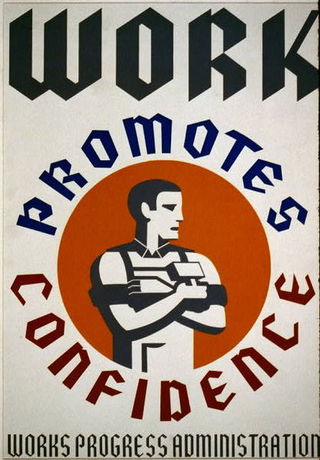Confidence
11 Ways to Project Confidence and Be Taken Seriously
Get the credit you deserve in work and life with these 11 strategies.
Posted August 6, 2018 Reviewed by Jessica Schrader

Confidence or Competence?
Here is a quote about confidence that makes my heart sink:
“Women who are confident of their abilities are more likely to succeed than those who lack confidence, even though the latter may be much more competent and talented and industrious.”
The quote is by psychologist Joyce Brothers, and, unfortunately, much research backs her up. There are very real dangers of not coming across as confident, especially in the workplace. While the quote speaks specifically to women, I assume it applies to men as well. This post will summarize the research on how conveying confidence (or not) affects others; then I’ll relay some ideas about how to project a more confident impression while staying true to yourself. While staying true to yourself. I want to emphasize that projecting confidence should not be an exercise in creating a False Self but in expressing your honest values, goals, ideas, and needs.
Beware the "Confidence Bias"
When people express themselves with assurance, we tend to believe them. This is the “confidence bias” (aka, the "confidence heuristic."). “If someone seems to believe in what they’re saying, they’re probably right,” is what we tell ourselves when we listen to a confident person, according to workplace expert Carolyn Webb, author of How to Have a Good Day at Work.
Research cited by Katty Kay and Claire Shipman in The Confidence Code likewise shows how easy it is to fall under the spell of confident people. In 2009 psychologist Cameron Anderson conducted tests among college students. He discovered that the less competent students, who thought they knew more than they did, were nonetheless accorded higher social status even when they came across as excessively confident. His conclusion? The same as Dr. Joyce Brothers: Confidence often trumps competence.
Does overconfidence ever become a problem? I’m relieved to report that it does. In their interview of Anderson, Kay and Shipman discovered that a modest amount of overconfidence could be beneficial, but excessive overconfidence could backfire. “Even a popular pilot has to be able to land a plane. If the gap between confidence and competence grows too large, overconfidence does become a weakness and a liability,” they conclude.
What’s At Stake?
The consequences of the “confidence bias” are profound. People who come across as confident will be trusted more by others. At work, the confident people are likely to be more admired, listened to, and promoted than the worker bees. They are more likely to be found in leadership positions. As long as their confidence is real—that is, they believe in themselves—and they don’t come across as narcissistic (a big red flag), they won’t alienate their friends or co-workers.
These inconvenient truths oblige us all to think about projecting more confidence in work and life.
What You Can Do to Project More Confidence
Below are 11 suggestions to try on for size. If they don’t fit you, don’t use them. There’s no point in feeling like a fake on top of having a lack of confidence. And faking doesn’t work anyway, according to Anderson. People can always see the “tells.” The challenge: Find ways to project self-assurance that harmonize well with your personality. Here are some possibilities, including two unconventional options, #10 and #11.
1. Break the spell of the "confidence bias" in your own life. Do you admire people just because they project confidence? Believing in the confidence bias could be hazardous to your workplace health. “If you think other people must know more than you, you may hold back from sharing your knowledge, which can lead to being seen as less valuable,” notes PT blogger Alice Boyes in The Healthy Mind Toolkit. Cultivate a healthy skepticism about the claims of others and put your own contributions out there.
2. Find a trusted advisor (a work mentor, a friend, or a Significant Other) to give you feedback on your Confidence Quotient. How do you come across to others? Maybe better than you think. Or maybe you have unconscious quirks and habits that make others discount you. The only way to find out is to ask someone and then to keep an open mind about what they say. To prevent overwhelm, decide beforehand what kind of feedback you want—maybe three good things and one way to improve, for example. Whatever your advisors say, thank them and let them know you'll think about it.

3. Increase your feelings of confidence by ... being competent! The Joyce Brothers quote notwithstanding, most of us want to build our confidence on a solid foundation of competence. You will feel competent and confident when you know your stuff. And you can convey that competence if you...
4. Memorize your facts and create a few boilerplate explanations. At work, there are certain things you will have to explain over and over again. Choose a few of these, write down great answers, polish those answers to a brilliant sheen, and memorize them. You will come across as self-assured and knowledgeable every time someone asks you for information.
5. Experiment with more confident body language and tone of voice. People who are confident tend to use expansive body language, have a lower voice tone, and speak in a calm, relaxed manner, according to some researchers. Whether deliberately taking up a so-called "power pose" will actually help you feel more confident is an open question, as research which once seemed to support the idea has since been challenged. However, it can’t hurt to experiment. At the very least, use good posture (your spine will thank you later in life) and breathe deeply to calm yourself. If you are sure about a piece of information, say it as a statement and avoid the annoying habit of letting your voice rise as if asking a question, know what I mean? It's OK to be right!
6. Be assertive, not bullying or "doormat-y." There is a huge difference between assertion, non-assertion, and aggression (review the differences here). Being aware of those differences will help you treat others with respect and stand up for yourself. The ability to present your point of view assertively could be the royal road to inner confidence and to an outer presentation of self that commands the respect of others.
7. Know your values, act on your values, and express those values to others. Knowing your values and acting on them can be a tremendous source of inner strength and satisfaction, whether or not you talk about them directly. "True success is living by your values," as Russ Harris says in his book, The Confidence Gap. Expressing your values can be a powerful way to exert influence and to come across as confident, both at work and in life. (There is an excellent list of values, along with advice on how to use them as guides to your life, in The Confidence Gap. See below in Sources.)
8. Adapt the “small-successes” method (described here) to your work setting. Keep a list of one to three daily small successes. Writing them down will keep them at top of mind when your boss or a colleague asks, "So what's new?" People may not realize your many contributions and achievements unless you reveal them now and then. Noticing your own successes and making a habit of sharing them will fortify your inner confidence, especially when you pay attention to those times when you acted on your values.
9. Own your expertise. Again, Alice Boyes: “We tend to assume that whatever we know, other people must know too.” They don’t. If you are not sure what your strengths are, use the small-successes method to uncover your unique expertise and areas of strength. Along the same lines, remember that your skills don’t need to be extraordinary to be valuable. This reminder, also from Boyes, helps us to avoid self-sabotaging perfectionism.
Finally, two unconventional pieces of advice about a more confident self-presentation:
10. Work on your self-control. Confidence is not the only quality that leads to success in the workplace, according to a large body of research. Just one example from Willpower, by Roy Baumeister and John Tierney: “In workplaces, managers scoring high in self-control were rated more favorably by their subordinates as well as by their peers.” People with self-control are able to restrain their impulses and empathize with others, even those they disagree with. Self-control will also give you a huge life bonus, paying off in better health, relationships, and wealth, among many others.
And last, but certainly not least:
11. Instead of trying to project more confidence, just accept yourself as you are. If the techniques above make you feel like a “con artist,” don’t use them. Being yourself and accepting yourself is always an option. I would argue that self-acceptance is the foundation of confidence anyway.
Next Steps
If you cringed as you read some of these suggestions, they are probably not right for you. But among them might be one or two that could make your life a little easier and a lot better. The acid test is whether a technique increases your internal sense of well-being… or not. Confidence for its own sake is just show; confidence that gives you an inner feeling of strength, clarity, calm, and vitality is priceless.
© Meg Selig, 2018. All rights reserved. For permissions, click here.
References
Boyes, A. (2018). The Healthy Mind Toolkit: Simple Strategies to Get Out of Your Own Way and Enjoy Your Life. New York: TarcherPerigee, p. 206 ff.
Kay, K. and Shipman, Claire (2014). The Confidence Code. New York: HarperCollins, p. 21 ff.
Tierney, J. and Baumeister, R.F. (2011) Willpower. New York: Penguin Press, p. 12.
Webb, C. (2016). How to Have a Good Day: Harness the Power of Behavioral Science to Transform Your Working Life. New York: Seven Shift. p. 236 ff.
Harris, R. (2011) The Confidence Gap. Boulder, CO: Trumpeter Books. p. 138 ff.




